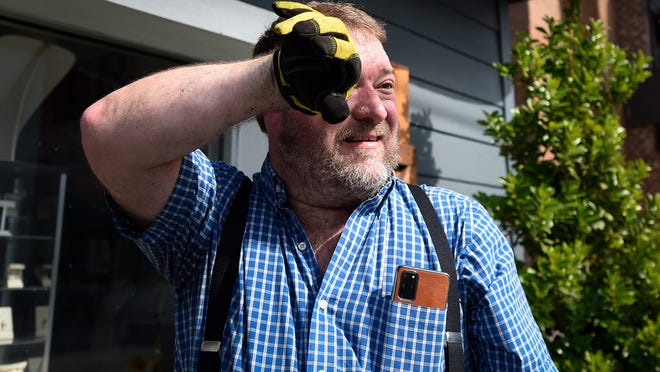At least 10 heat records were broken in cities across the Southwest and central U.S. over the weekend, and more could fall this week amid continued forecasts of searing heat.
Cities and towns in Colorado, Texas, Oklahoma and Arkansas all saw record highs on Friday and Saturday. Some broke temperature records set nearly a decade ago and others exceeded previous highs by up to six degrees. The high temperatures are largely the result of a “heat dome” – a persistent region of high pressure trapping heat over the area.
While the daily records broken weren’t necessarily widespread, given July is already a hot time of year, the conditions created by the heat dome have still been conducive to approaching and meeting record numbers in many areas, Accuweather Meteorologist Joseph Bauer told USA TODAY.
“(The heat dome) has been there from late last week into this weekend, and it’s going to remain there through this coming week, and that’s what’s going to keep it hot in the West,” Bauer said. “It’s been an extremely warm summer this year.”
What heat records were broken?
In Colorado, Denver International Airport reported a record-breaking 100 degrees for July 9, according to the National Weather Service, surpassing a record high of 98 degrees for that date just last year. Colorado Springs also reached a record 97 degrees on the same day, breaking a record set in 2021.
Parts of Texas broke records from almost a century ago: Austin’s Camp Mabry military base hit a record daily high of 106 degrees Saturday, breaking a previous record of 105 degrees set in 1925 and matched in 2009. Waco, Texas, reached 108 degrees on Saturday, far exceeding a record high of 104 set in 1917, 1935 and 1978.
Some states saw not just broken records, but shattered ones. At Tulsa, Oklahoma’s Riverside Airport Friday, the temperature reached a record 105 degrees, widely surpassing the 2001 high of 99 degrees for July 8. The surrounding cities of McAlester and Muskogee in Oklahoma as well as Fayetteville, Fort Smith and NWA Airport in Arkansas also broke records by spans of one to six degrees.
When will this heat wave be over?
A cold front moving through North and South Dakota on Sunday could bring some relief to the Denver area this week, according to Bauer, but the strength of the heat dome is forecasted to spike temperatures in the area again in the following days, possibly up to another record-breaking level.
There isn’t much relief for the Austin area either, according to Bauer, who said Accuweather is forecasting temperatures “into the hundreds” through the next week, approaching record breaking numbers yet again.
The heat dome is likely to shift and expand to the West as the week begins, and temperatures will be on the rise in Arizona, Nevada and Utah, according to Accuweather.
The heat dome is strong enough to keep out cold fronts that approach areas affected by the dome, thus keeping heat balled up in places like the Great Plains, Bauer said – an area already suffering from a long period of drought.
“It’s unfortunate to see this setup, as there’s not much relief in sight,” he said.
How should you prepare for extreme heat?
As extreme heat and humidity can challenge the body’s ability to cool itself, it is valuable to know the signs of excessive heat exposure and how to treat heat-related illnesses. Knowing the warning signs for heat stroke and heat exhaustion, and the differences between the two, can help you to protect yourself and those around you, experts say.
Those at greatest risk of heat illness are people 65 or older, under the age of 2, and those living with chronic diseases or mental illness, according to the Centers for Disease Control and Prevention.
Ways to prevent heat-related illness include drinking water, utilizing air conditioning, limiting outdoor activity, spending time in the shade when outside and cooling off in a pool or other body of water.
Keep an eye on your pets, too, amid high temperatures and humidity: The Humane Society of the United States suggests limiting exercise for dogs on hot days, providing ample shade and water for your pet and keeping an eye out for signs of heatstroke, including heavy panting, glazed eyes and a rapid heartbeat.


